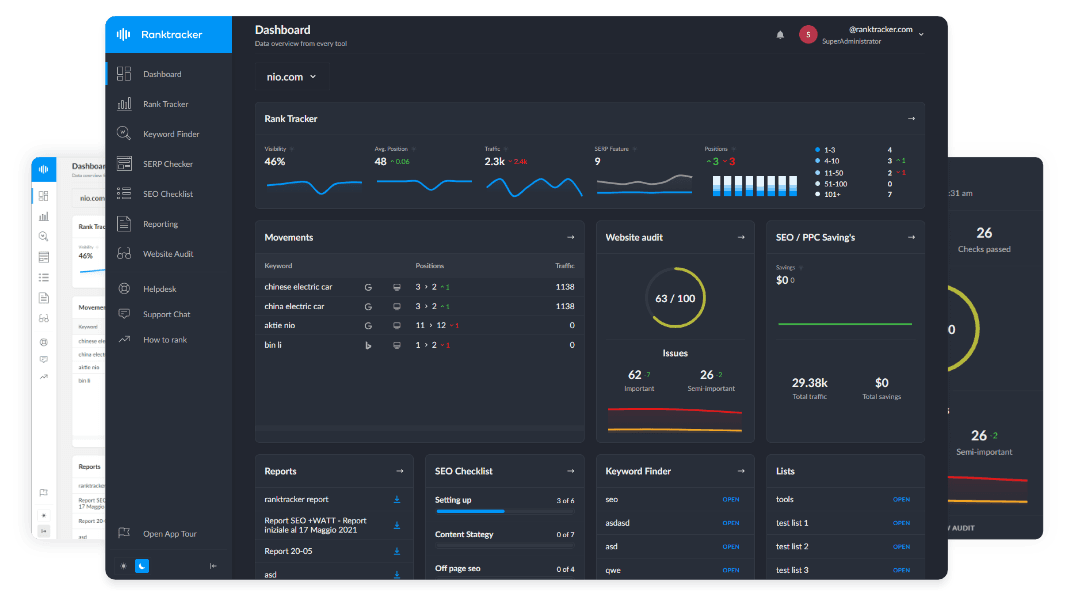Intro
Running an online store is like opening a shop in the world’s biggest mall — the internet. But how do people find your store among millions of others? The secret is keyword research.
Let’s learn how smart brands, like Cosmetify, used keyword research to turn their quiet website into a revenue machine — increasing traffic and making more sales. In fact, they saw a 250% increase in organic revenue just by choosing the right words to target.
Ready to get those results too?
Here are 6 proven and simple steps to find the best ecommerce keywords that help more people find your store and buy from it.
Why Keyword Research Is Important for Ecommerce
Think of keywords as the questions people type into Google when they’re looking to learn, compare, or buy something. If you know what words they use, you can:
-
Show up in search results
-
Attract more visitors
-
Turn those visitors into buyers
Let’s explore the main types of keywords you should care about.
1. Informational Keywords
These are “how-to” or “what is” type of questions. People using these aren’t ready to buy yet, but they’re curious.
Examples:
-
How to choose running shoes
-
Best skincare tips for oily skin
Use these to write helpful blog posts and guide potential buyers.
2. Commercial Keywords
These are used when someone is thinking about buying but wants to compare options.
Examples:
-
Best laptops for students
-
Allbirds vs Nike shoes
Use these in comparison posts or videos.
3. Transactional Keywords
These show a clear intention to buy.
The All-in-One Platform for Effective SEO
Behind every successful business is a strong SEO campaign. But with countless optimization tools and techniques out there to choose from, it can be hard to know where to start. Well, fear no more, cause I've got just the thing to help. Presenting the Ranktracker all-in-one platform for effective SEO
We have finally opened registration to Ranktracker absolutely free!
Create a free accountOr Sign in using your credentials
Examples:
-
Buy wireless earbuds under $100
-
Cheap workout mats
Use these on your product or category pages.
4. Navigational Keywords
These are used to find a specific brand, product, or page.
Examples:
-
Zara winter collection sale
-
IKEA PAX closet
Make sure your brand appears for searches like these.
5. Long-Tail Keywords
These are longer, more detailed search phrases. They often have lower competition but high intent.
Examples:
-
Best hiking shoes for women with flat feet
-
Top-rated baby strollers under $200
** 6 Steps to Do Keyword Research the Right Way**
Step 1: Listen to Your Customers
The best keywords come from your own customers.
People might search differently from how you describe your products. For example:
-
Brand: “10% niacinamide serum”
-
Customer: “best serum for oily skin”
Where to look:
-
Product reviews
-
Social media comments
-
Customer support questions
-
On-site search terms
Write down the exact words people use — these are your best keyword clues.
Step 2: Make a List of Seed Keywords
Seed keywords are your starting words. They describe your main product or service.
Example: If you sell coffee makers, your seed keywords could be:
-
Coffee maker
-
French press
-
Espresso machine
Now, go one level deeper. Think about:
-
What are your product categories?
-
What are people using your product for?
Example:
| Core Product | Other Names | Category Name | Use Case |
| Coffee Maker | French press | Single-serve machine | Morning coffee |
| Espresso | Moka pot | Drip coffee maker | Office break time |
Write all of this in a Google Sheet or keyword planner. This helps you later when you organize them.
Step 3: Match Keywords to the Buying Journey
People go through 3 stages before they buy:
1. Awareness Stage
They’re just realizing they have a need.
Example keyword: How to organize a small closet
The All-in-One Platform for Effective SEO
Behind every successful business is a strong SEO campaign. But with countless optimization tools and techniques out there to choose from, it can be hard to know where to start. Well, fear no more, cause I've got just the thing to help. Presenting the Ranktracker all-in-one platform for effective SEO
We have finally opened registration to Ranktracker absolutely free!
Create a free accountOr Sign in using your credentials
Create blog posts or videos for these keywords.
2. Consideration Stage
They’re comparing options.
Example keyword: Best closets for small apartments
Use comparison guides or reviews here.
3. Decision Stage
They’re ready to buy.
Example keyword: Buy PAX closet online
Send them straight to your product page.
Assign keywords to the right type of content. Don’t show a blog post to someone who’s ready to buy!
Step 4: Check What Your Competitors Are Doing
Your competitors have done some of the hard work for you. Use tools like Semrush to find:
-
What keywords they rank for
-
Which ones you’re missing out on
For example, if 3 other skincare brands all rank for “best vitamin C serum”, and you don’t — that’s a great keyword to go after.
Look at:
-
Keyword volume (how many people search it)
-
CPC (cost per click — the higher it is, the more valuable it is)
-
Difficulty (how hard it is to rank)
Use this data to find easy wins.
Step 5: Choose the Right Keywords to Focus On
Now that you’ve got a big list of keywords, how do you choose which ones to use?
Don’t always go for the biggest search numbers.
For example:
-
Wireless headphones – 50,000 searches (but very competitive)
-
Best noise canceling headphones for travel – 1,200 searches (but higher intent)
Ask these questions:
-
Is the keyword specific?
-
Does it show a clear intent to buy?
-
Is it realistic for your site to rank for?
Focus on a mix of quick wins (easy & high impact) and long-term goals.
Step 6: Build a Content Plan Based on Your Keywords
Now, organize your keywords by:
-
Intent (informational, commercial, transactional)
-
Content format (blog post, product page, video)
Here’s an example if you sell dog food and clothes:
| Buyer Stage | Keyword | Goal | Content Format |
| Awareness | Best dog food for puppies | Educate | Blog post |
| Awareness | How to measure dog for jacket | Educate | Blog + infographic |
| Consideration | Wet vs dry dog food | Compare | Blog + video |
| Decision | Buy dog raincoat | Sell | Product page |
Add this to your content calendar. Focus on trending topics, product launches, and upcoming sales seasons.
2 Common Mistakes to Avoid
1. Poor Keyword Mapping
Targeting the same keyword on different pages confuses Google. For example, “camping tents” should only be on your main tents page — not every product.
Map keywords to one best-fit page.
2. Only Using Buying Keywords
Don’t focus only on “buy now” keywords. That limits how many people you can reach.
The All-in-One Platform for Effective SEO
Behind every successful business is a strong SEO campaign. But with countless optimization tools and techniques out there to choose from, it can be hard to know where to start. Well, fear no more, cause I've got just the thing to help. Presenting the Ranktracker all-in-one platform for effective SEO
We have finally opened registration to Ranktracker absolutely free!
Create a free accountOr Sign in using your credentials
Use a mix of:
-
Informational keywords (to attract)
-
Commercial keywords (to convince)
-
Transactional keywords (to convert)
** Final Tips: Make Keyword Research Work for You**
-
Use the language your customers use
-
Pick keywords based on intent, not just size
-
Make different content for different buyer stages
-
Watch what your competitors are doing
-
Keep updating your keyword plan every few months
Ready to Grow Your Online Store with SEO?
Keyword research isn’t just about tools and numbers. It’s about understanding your customers.
When you choose the right keywords, your site becomes easier to find, your pages attract the right people, and your sales grow — all without spending more on ads.
Start today by writing down your top 10 keywords. Then build content around them using these 6 steps.
Need help? Try using a free keyword planner and template to organize everything.

